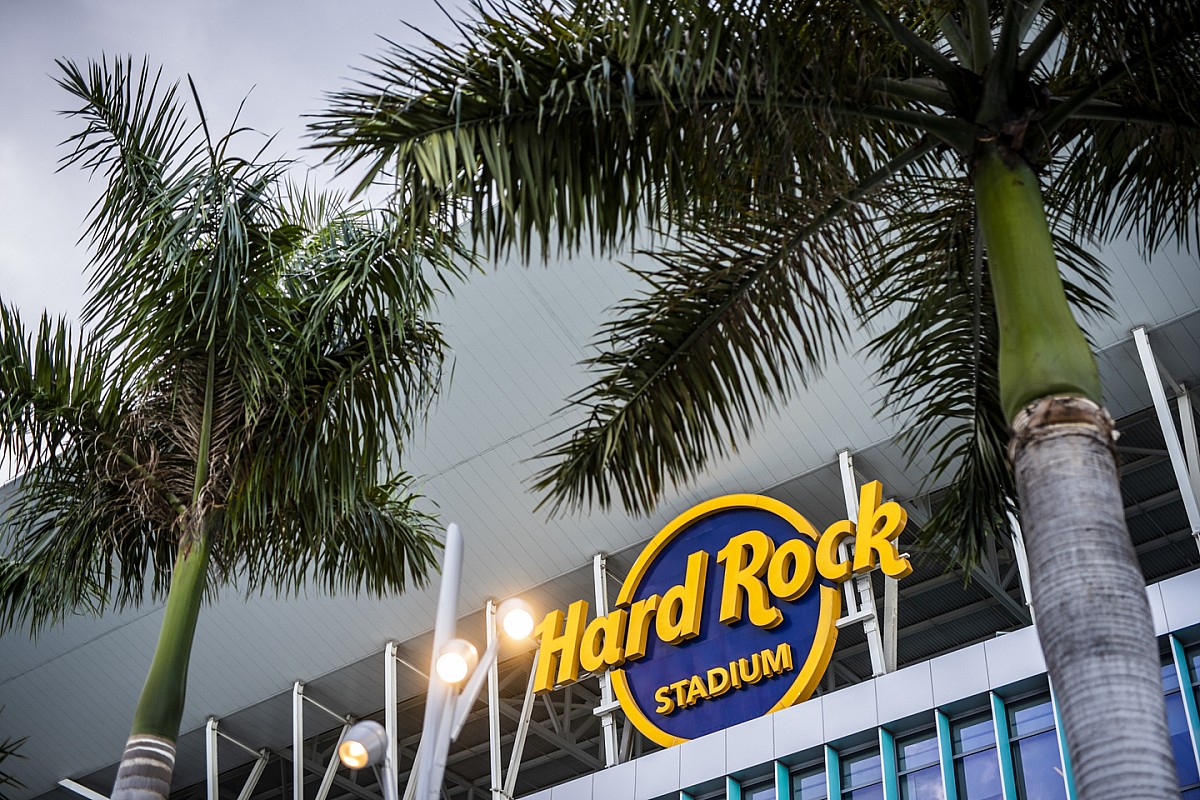Due to its location around the Hard Rock Stadium in Miami Gardens, the circuit which hosts its first Grand Prix this weekend had to adapt to its environment. At the heart of this sporting mecca in the Florida capital, the designers of the circuit had to adapt to a busy schedule.
The Miami Open (a tennis tournament held at the same venue) required that a stretch from turn 3 to turn 5 be covered with Astroturf to prevent any potential damage from spectators. Protective plastic covers were positioned on the track for the deliveries by the trucks in the hospitality, since the courts were located in different areas around the track.
But if the tournament ended on April 3, allowing the Apex team, in charge of circuit construction, to regain full access to the site, they had to deal with a permanent element this time, the environment. The owner of the stadium, Stephen Ross, real estate magnate and boss of the Miami Dolphins (the team playing in the NFL, the American football league), is very attentive to how his stadium fits into the environment that it ‘surrounded.
« Mr. Ross, loves greenery and he loves his landscaping »says Apex project manager Sam Worthy. “Big efforts have been made around the stadium to have as much greenery as possible, especially when it comes to old trees. So for anyone that naturally overhangs our track, we have tried to keep as many branches as possible. place and maintain the thickness of the foliage. »
« It certainly looks very nice; not many circuits have something like this, and we have discussed it with the FIA, who have been here three times. They are also happy to see it. One of the challenges has been to ‘to physically fit the fence around the trees, and at the same time have procedures to ensure there are no loose branches that could fall.’

The Miami circuit
Most of the trees in question are on the rear section, between turns 16 and 17, where the single-seaters will reach 320 km/h. Parallel to this 1.2 km straight line is a watercourse called Snake Creek, which extends to Lake Maule in North Miami Beach. Wherever you see water in this area, you are likely to find wild iguanas that can grow up to six feet long and weigh over 22 pounds.
« We certainly don’t want a giant iguana to fall on one of the pilots, that would be problematic! » adds Worthy. « When it’s cold here, they can fall out of the trees because they’re cold-blooded and fall asleep. It won’t be a problem in May, but they can still climb trees and jump or crawl on the track. We have procedures in place for stewards to pass through the openings [dans les murs en béton] to make sure no animals are hiding there or in the trees. It’s a pretty unique thing to deal with! »
“There are also waterfowl and ducks, and a few snakes. But the iguanas are the biggest problem for us, so the marshals will be nets for the iguanas, and the objective will be to catch them and then release them. somewhere far off the track. »

Proximity to the ocean could cause problems
While iguanas are an invasive species in Florida, local natural phenomena include thunderstorms which tend to become more frequent as summer approaches. These large storms can lead to flash flooding, so Apex has worked with the best specialists in the business to deal with this threat, given that the track is just a few miles out to sea and the water table is extremely high.
« You won’t see our drains on any other track »explains Worthy. « We worked with [les spécialistes des drains] ACO to design them for this Miami circuit. Because we’re so close to the water table, we need everything as shallow as possible to be able to effectively move water further and further away. »
« A traditional slotted drain is too deep, whereas these bring water into the drainpipes from a much higher point than usual, allowing us to run longer distances. The drainage system is very efficient throughout the site [y compris les vastes réservoirs de stockage situés sous le stade]. ACO’s solutions that we have jointly developed work well with vibrators, and they are also very aesthetic. »
Meteorologists predict a 41% risk of rain for the race, with an increase after the start, which will be given at 3:30 p.m. (9:30 p.m. in France).
